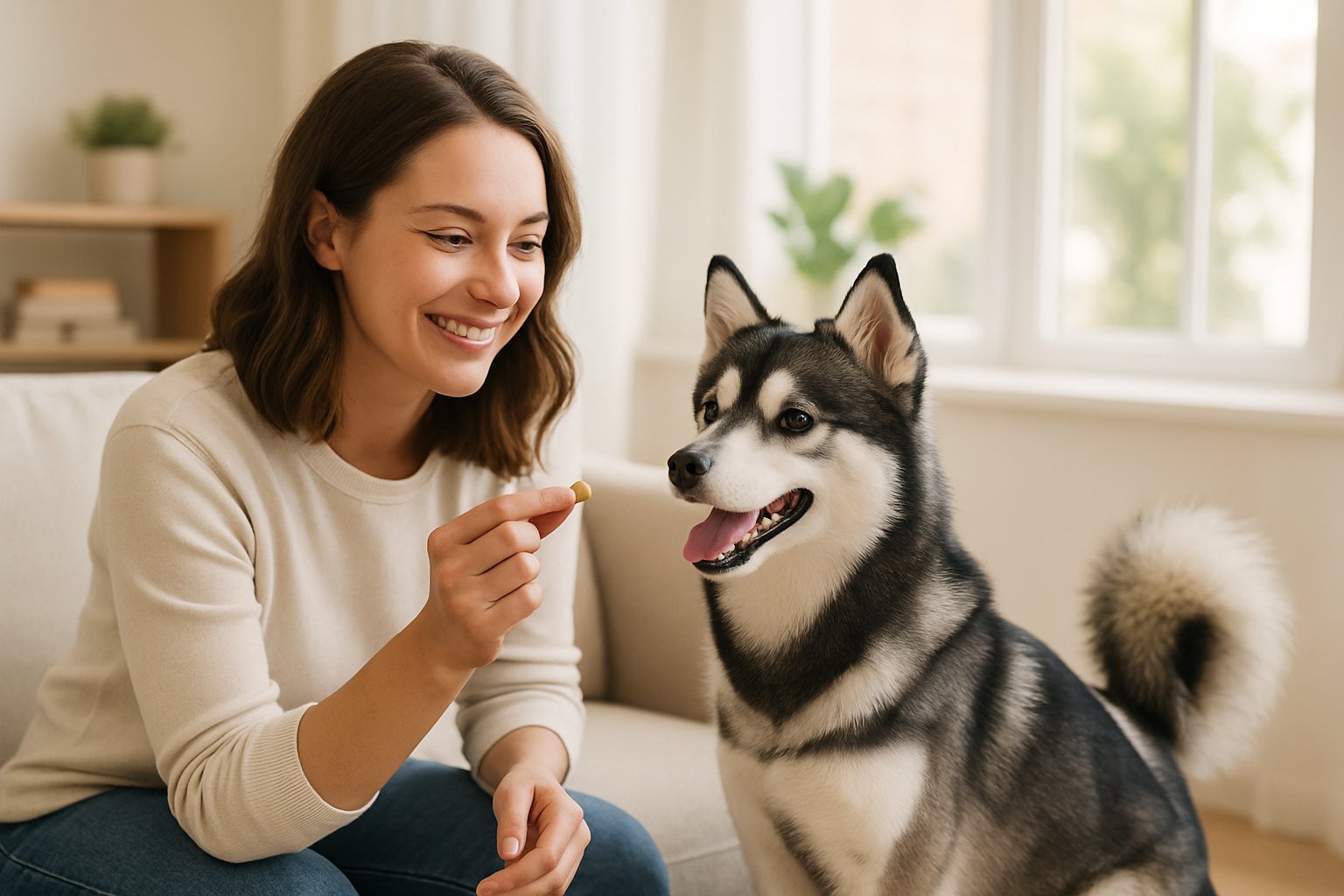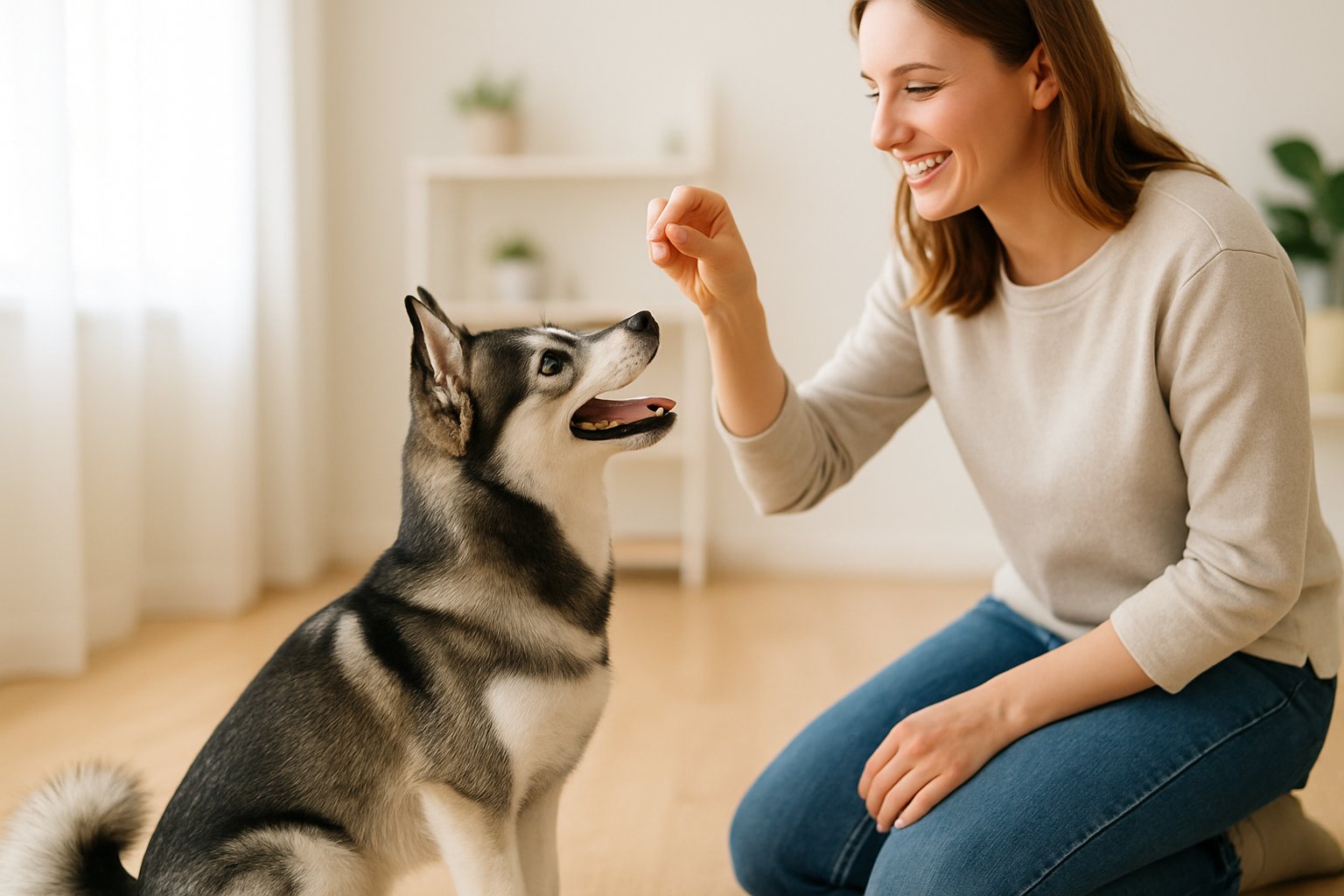Training an Alaskan Klee Kai can be both rewarding and challenging. This intelligent and energetic breed thrives when given proper guidance and care. Learning the right training methods will help you build a better relationship with your dog and encourage good behavior. This article covers 10 essential tips to help you succeed in training your Alaskan Klee Kai and enjoy life together.
1. Start with basic commands like sit, stay, come, and leave it.
Teaching your Alaska Klee Kai basic commands is an important first step. Commands like sit, stay, come, and leave it form the foundation of good behavior. These commands help your dog understand what you expect, making daily life and walks easier. Start with short, positive training sessions to keep your dog’s attention.
2. Use positive reinforcement consistently to encourage good behavior.

Positive reinforcement means rewarding your Alaskan Klee Kai when they show good behavior. This can be with treats, praise, or extra playtime. The reward should come right after the behavior you want to encourage. Alaskan Klee Kai are intelligent and respond well to training that uses rewards. They learn faster when they know what earns them something they like.
3. Keep training sessions short and engaging to maintain interest.
Alaskan Klee Kai can lose focus quickly during training. To help your dog do its best, limit each session to about 10 to 15 minutes. Short sessions help keep your Klee Kai attentive and stop them from becoming bored or distracted. Keeping lessons fun is very important for this breed. Use toys, treats, and upbeat encouragement to maintain their interest throughout the session. Dogs like the Alaskan Klee Kai are smart and enjoy mental stimulation, so try to mix in games or new tricks during your sessions.
4. Socialize your Alaskan Klee Kai early with different people and environments.
Start socializing your Alaskan Klee Kai while they are still a puppy. The early weeks and months are a key time for exposure. Experiences your dog has now will shape how they react to new people, animals, and places as adults. Bring your puppy to different places like parks, pet stores, and around your neighborhood. Let them meet a variety of people of all ages and different types of animals. Small, positive exposures help prevent fearfulness or shyness.
5. Provide mental stimulation through puzzle toys and scent work.
- The Alaska Klee Kai is a smart and curious breed. This means mental exercise is just as important as physical activity for them. If your dog gets bored, you may notice unwanted behaviors.
- Puzzle toys make your Alaska Klee Kai think and problem-solve. These toys can slow down eating and turn mealtime into a fun game. Your dog learns to use its nose and paws to get treats.
- Scent work activities tap into your dog’s natural instincts. Games like hide-and-seek with treats or using snuffle mats allow your Klee Kai to search and sniff, providing both challenge and excitement. Scent-driven toys, such as treat balls and scent puzzles, are also great ways to keep your dog engaged.
- Short training sessions focused on new tricks or commands can boost your dog’s confidence and attention. Even five minutes a day of focused play or scent games can help. Simple scent games, such as hiding treats in boxes, are easy to set up at home and offer strong mental stimulation.
- Rotating your dog’s toys helps things stay fresh. Change puzzle toys every few days so your Alaska Klee Kai does not get bored. This also helps expose your dog to new challenges and keeps their brain active.
6. Incorporate agility or rally training to challenge their intelligence.
Agility and rally training are excellent activities for your Alaskan Klee Kai. These exercises help keep their minds engaged and make daily routines more interesting. This breed is very smart and curious. Giving them tasks like navigating obstacles or following commands in rally sessions helps use their brains in a positive way. It can prevent boredom and reduce unwanted behaviors.
7. Be patient and consistent; Alaskan Klee Kais respond to steady guidance.
Training an Alaskan Klee Kai takes time and steady effort. This breed does best when you use a calm and regular approach each day. When you keep your methods the same, your dog learns faster and feels more secure. Don’t get discouraged if progress seems slow. Alaskan Klee Kais can be sensitive and may take a little longer to adjust to new routines. It is important to remember that each small step forward is a win.

8. Enroll in a quality training school if self-training is challenging.
If you’re finding it hard to train your Alaskan Klee Kai on your own, it can help to get support from a professional dog training school. This is especially true if your puppy is showing stubborn behavior or if training feels overwhelming. A quality training school can offer expert guidance and proven techniques specific to your dog’s needs. Instructors with experience in breed-specific behavior can help address issues like barking, shyness, or pulling on the leash.
9. Use treats and praise immediately to reinforce desired actions.
- When training your Alaskan Klee Kai, timing is important. Give treats or praise right after your dog does the action you want. This helps your dog connect the reward to that specific behavior.
- Rewards like treats, praise, or even a favorite toy should be delivered quickly. This makes it clear what you are praising. Your Klee Kai will understand which action earned the reward.
- Stay consistent and use the same rewards for good behaviors. Immediate feedback motivates your Alaskan Klee Kai to repeat the correct actions. This method is supported by positive reinforcement training experts.
- Short training sessions work best. Always end on a positive note, with treats and praise given right after the correct behavior.
10. Avoid harsh punishments to maintain your dog’s trust and motivation.
Using harsh punishments with your Alaskan Klee Kai can damage your relationship with your dog. Yelling, hitting, or using fear often makes dogs anxious or scared of you. This approach can break trust and lead to more behavior problems rather than solving them. Instead, focus on positive reinforcement training to guide your dog. Reward good behavior right away with treats, praise, or a favorite toy. This method makes it clear to your Klee Kai what you want them to do and keeps training sessions upbeat.



